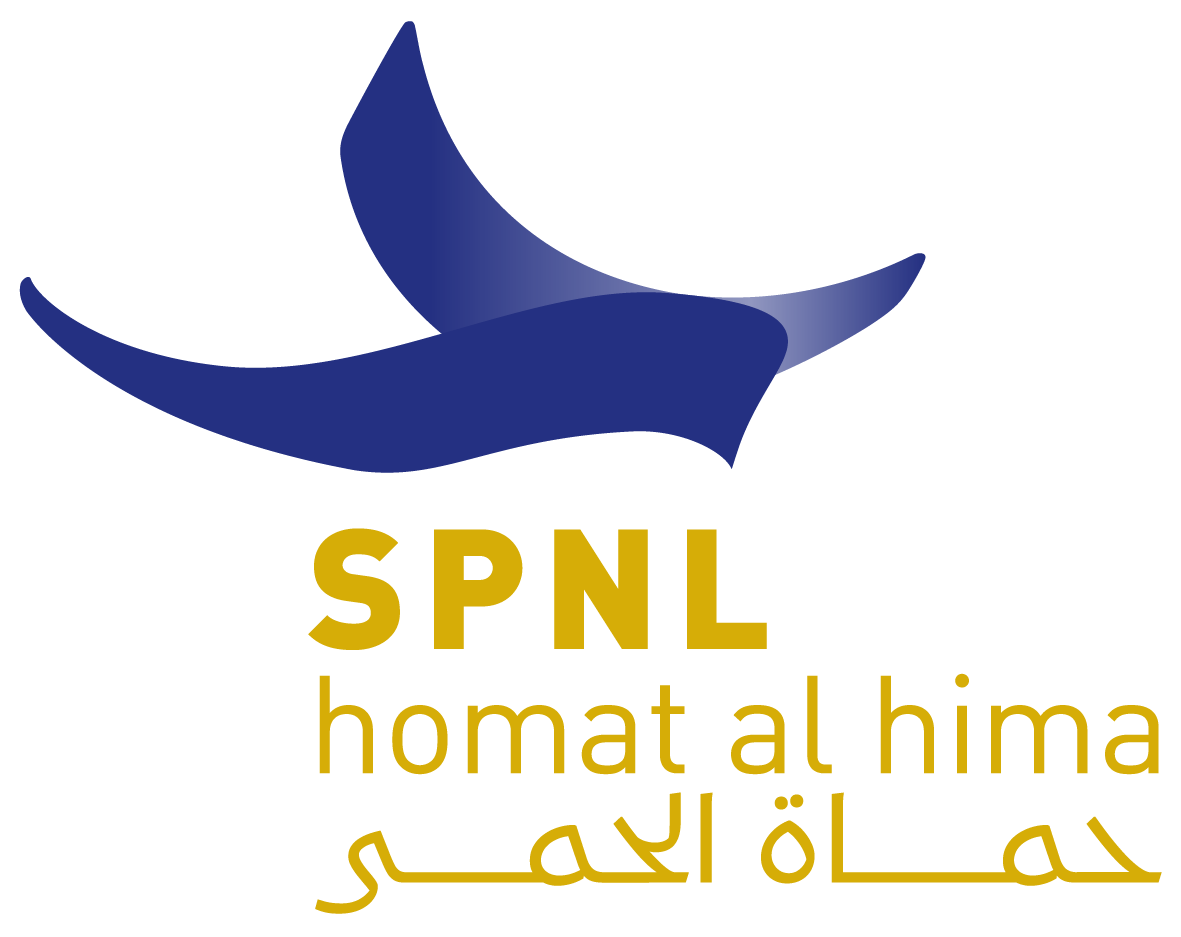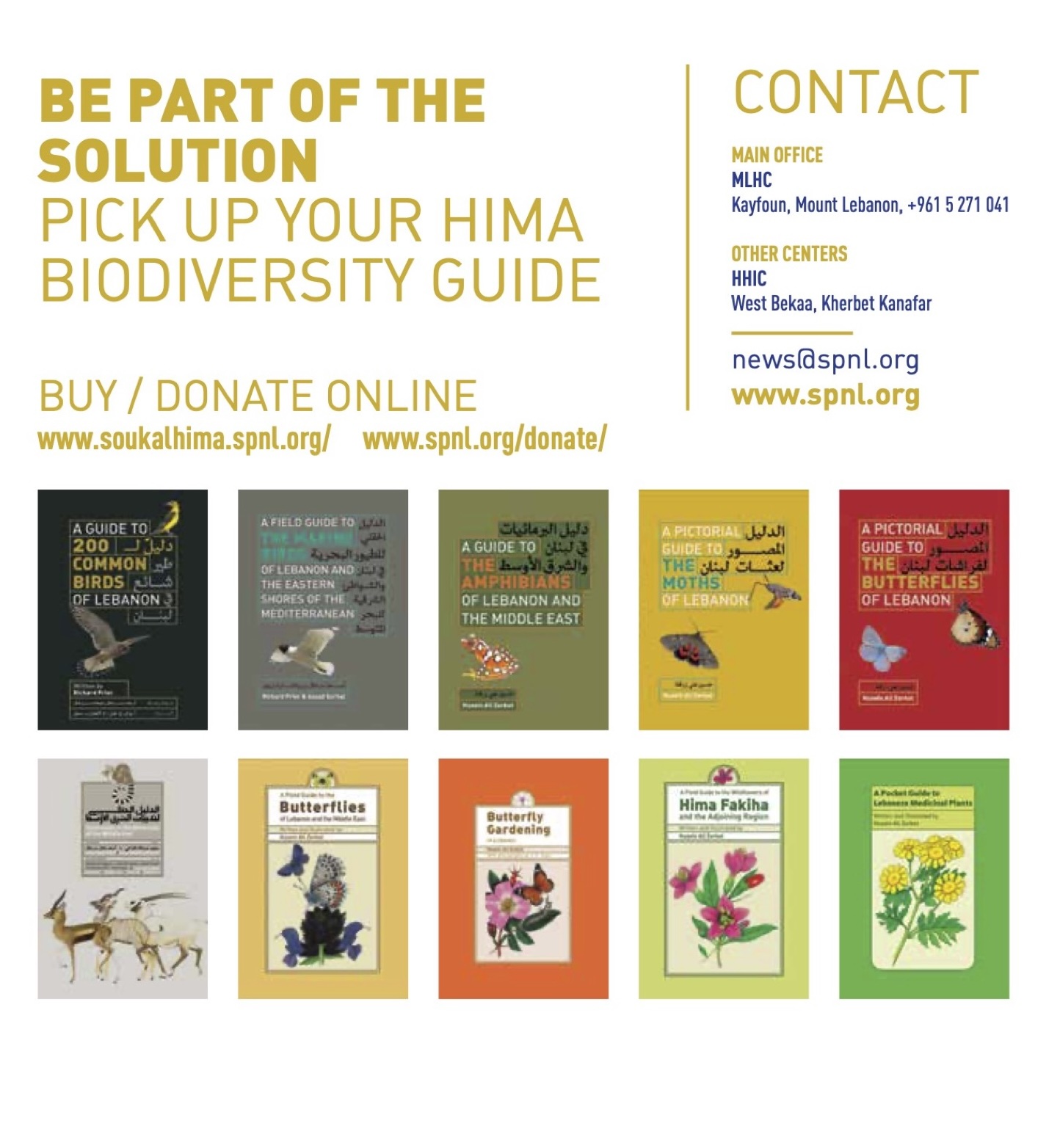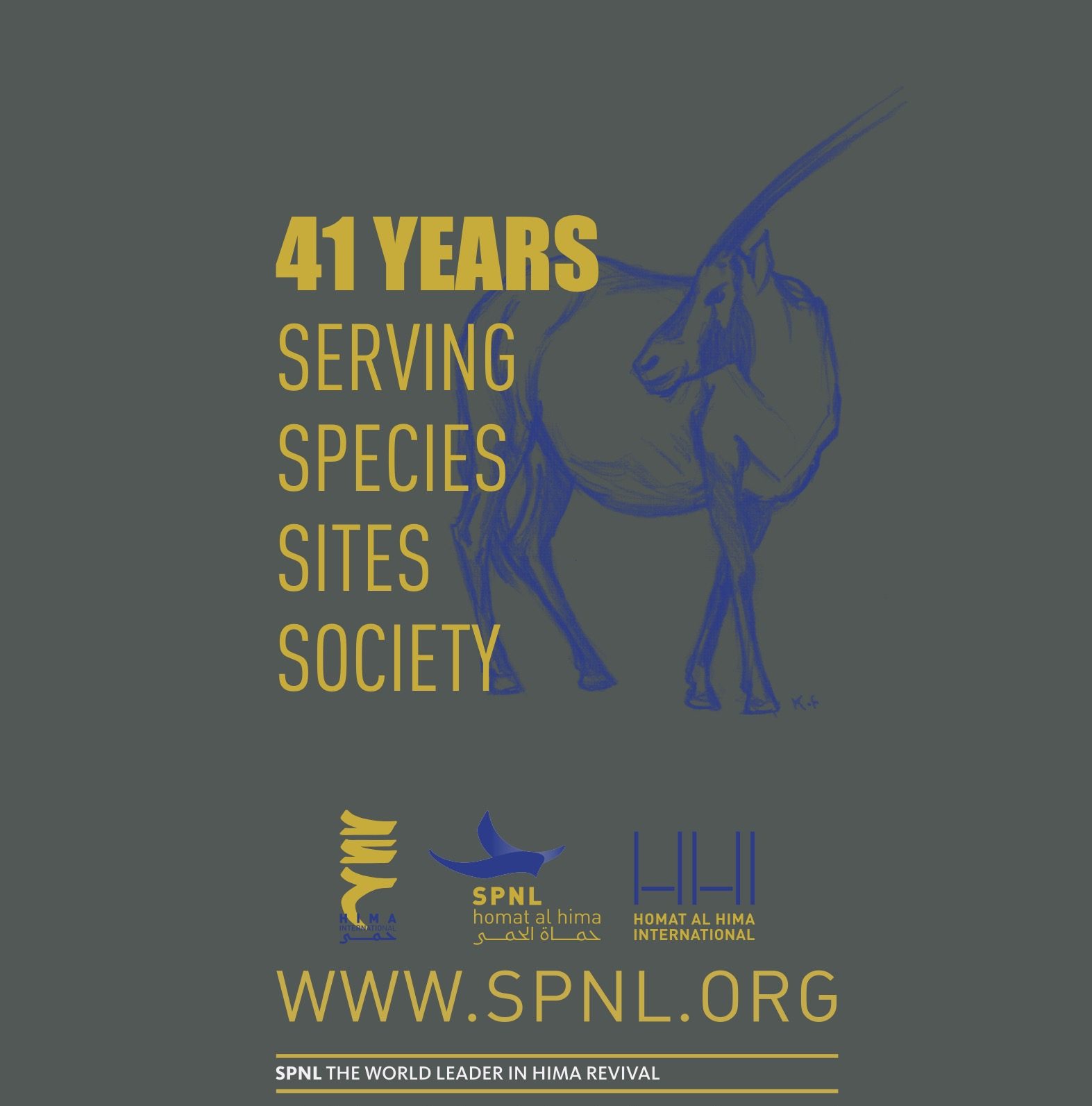The Society for The Protection of Nature in Lebanon organized a closing ceremony for the European Union-funded project entitled “Enhancing livelihoods of Lebanese communities in Hima territories; from social, economic and natural perspectives” which lasted for three years. The project was implemented in the Bekaa region, namely Anjar/Kfarzabad, El Fekha and Ain Zebdeh/Kherbet Qanafar.
Mr. Gianandrea Villa, the responsible for local authorities’ projects in the EU Delegation in Lebanon, Mr. Asaad Serhal Executive Director at SPNL, Mrs. Natalie Chemaly the advisor for Social Affairs at Dar Al Handasa – Nazih Taleb & Co., who was supervising the project, Dr. Ghassan Jaradi, Prof. Dr. In Eco-Ornithology, Mr. Henry Chedid the head of West Bekaa Country Club, Mr. Vartkes Khoshian Anjar mayor, Marcel Karam representative of Kherbet Kanafar municipality and the mayor Tony Chedid, Qasim Shoker the manager of Hima Kfar Zabad and the previous mayor, Elias Ajami the vice president of Saghbine municipality, Hafeez Al Tin a member in Saghbine municipality, and Antoun Nasr SPNL focal point and representative in Hima El fekha in addition to many volunteers from the various Hima sites under the name of “Homat Al Hima” an initiative launched by SPNL Association. The project targeted 3 out of 18 Hima sites that SPNL worked on initiating, developing, and sustaining them in collaboration with local communities and authorities. Those Hima sites are located in the Bekaa region, namely Anjar/Kfarzabad, El Fekha and Ain Zebdeh/Kherbet Qanafar.
The project aims to alleviate the social and economic pressure and burden resulting from the Syrian crisis and influx to Lebanon, through enhancing the livelihoods of farmers, shepherds, women, and fishermen and encouraging the revival of traditional and cultural handcrafts and cooperatives under Souk Al Hima Program. In addition, the project objectives include the development of management/Business plans, economic empowerment, education & awareness for kids under the School With No Walls (SNOW) program, and marketing of the different Souk Al Hima local products.
The Society for The Protection of Nature in Lebanon through its direct collaboration with the municipalities, local communities, and the production sectors is considered to be the world leader in Hima revival, which is a community based approach that aims to protect nature and biodiversity for the benefit of people and the sustainable use of natural resources. In this context, during the past 3 years SPNL has implemented the project “Enhancing livelihoods of Lebanese communities in Hima territories; from social, economic and natural perspectives” that is funded by the European Union Delegation.
Hima in Arabic means a Protected Area. It is a community that acts for the conservation of sites, species and habitats in order to achieve the sustainable use of natural resources. Its origin goes back more than 1,500 years ago and it is spread along the Arabian Peninsula as a “tribal” system for sustainable management of natural resources. In recent years the Hima approach- one that roots conservation in the actions of local communities- has seen a revival, as an alternative and complementary approach to the designation of protected areas by states. Efforts to promote the principles of Himas have been especially active in Lebanon by SPNL since 2004.
Mr. Gianandrea Villa has focused in his speech on the excessive efforts that have been made and the results that have been achieved, stressing that the project can be replicated in many other areas in need of improving livelihoods and local communities’ empowerment.
And Mr. Villa added that this project is a proof that small projects with limited budgets can achieve good results. As you know, that the European Union new policy is based on accepting fewer projects with bigger budgets, however this project represents a success story and proves that small projects are also demanded and successful with high potentials to achieve their goals and objectives.”
Further, Mr. Villa highlighted the main projects that are being funded by the European Union in Lebanon, mainly: the lack of access of vulnerable groups in Lebanon to basic services, the improvement of basic infrastructure and economic improvement in Lebanon, upgrading the solid waste management in Lebanon, supporting the municipal finance program, the stability of the educational system in cases of any emergencies in Lebanon , water supply and wastewater treatment, and the protection of marine resources and its sustainable use in Lebanon.
In turn, Mr. Assad Serhal thanked the European Union for his different contributions and its impact on local communities in Lebanon; Stressing that the closure of the project does not mean the closure of the program, whereby supporting and enhancing livelihoods of local communities is a basic mission at SPNL that the organization will continue to implement and develop.
Mr. Serhal focused on the importance of the partnership between the civil and private sectors, pointing out that SPNL succeeded in documenting a successful partnership with the West Bekaa Country Club, which seriously contributes to the success of the various projects carried out in the Hima sites particularly in West Bekaa; mentioning that Mr. Henry Chedid the president/head of WBCC has agreed to invest a big piece of land to launch the International Homat Al Hima Center, which will be announced soon. The center is one of a kind and it will have a significant impact on nature conservation, youth empowerment, development of scientific studies, the mechanisms of storage and documentation, and the protection of biodiversity and cultural and natural heritage.
Also Mr. Henry Chedid restated the significance of the partnership between West Bekaa Country Club and the Society for The Protection of Nature in Lebanon, emphasizing that the private sector is a key partner in the protection of the environment, especially through the adoption of the Hima Approach, which has proven its effectiveness and ability to create the desired balance between the needs of the community and the sustainability of resources.
The closing ceremony speeches also included interventions from Adonis Al Khatib, head of the Middle East Center for sustainable hunting, Marcel Karam on behalf of Kherbet Kanafar municipality, in addition to Berj Tumberian, Jano Bambokian, Maria Karam, Antoun Nasr, and Ghassan Abu Rjeily as Homat Al Hima representatives from each Hima site targeted throughout the project.
Please note that Dr. Moussa Abou Hamd, Saghbine mayor and Mr. Maroun Saab, Ain Zebdeh mayor, and Mr. Farid Ammoury the vice president of Ain Zebdeh municipality, in addition to Mr. George Karam the Vise president of Kherbet Kanafar municipality and Dany Estphan a municipal member joined the ceremony afterwards.
Further, a field visit to the Future Homat Al Hima Center was done and the participants and mainly the 47 boys and girls “Homat Al Hima” were separated into different groups to participate in the outdoor activities such as birdwatching, hiking, and biking. And 21 kids also participated in the different awareness and educational activities such as birdwatching, hiking, drawing & painting, and shepherd story telling; taking into consideration that some activities were cancelled since it was very muddy. Finally the day finished after a tasty Lebanese Lunch.






